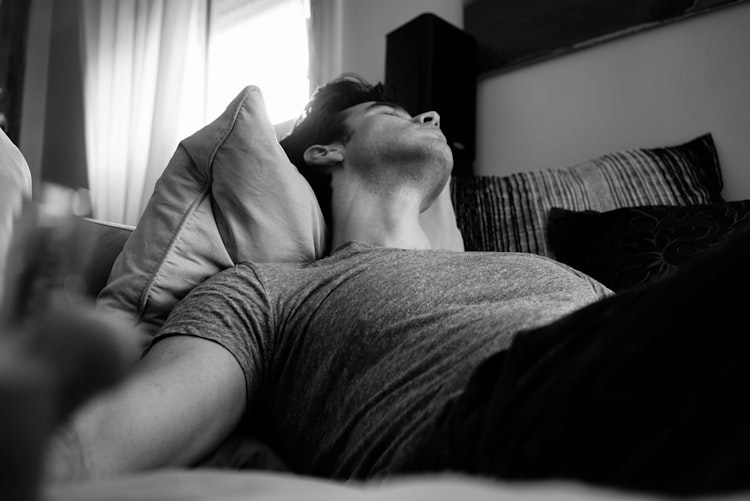As effective as CPAP therapy can be, there is no denying that it isn’t always the most comfortable. Many people struggle to adapt to wearing a mask at night. Feelings of claustrophobia can even result in some patients taking off the mask during their sleep. Others struggle to get used to the continual flow of air pressure that is delivered to their breathing passages.
With so many potential barriers in the way, it shouldn’t come as much of a surprise that long-term overviews of treatment adherence have found that on average, 34.1 percent of patients will not follow their CPAP therapy guidelines.
Unfortunately, giving up on CPAP therapy can have significant negative health consequences. From depression and obesity to an increased risk for heart attack and stroke, untreated sleep apnea can severely impact all aspects of your overall well-being.
The good news is that new technology has enabled the introduction of alternative treatment methods. Depending on the nature of your obstructive sleep apnea, you could benefit from a revolutionary new tool: the Philips Respironics NightBalance.
Your Sleep Position & Sleep Apnea
There are many issues that can contribute to obstructive sleep apnea. While obesity is one of the most commonly cited contributors to the condition, WebMD reports that studies have connected several other physical conditions and behaviors to the development of sleep apnea, including hypothyroidism, smoking or using sedatives, and excess alcohol consumption.
Some sleep apnea causes stem from genetic traits, such as having a naturally narrow throat or a deviated septum. Any of these underlying conditions will make you more likely to develop obstructive sleep apnea.
However, one contributor that is frequently overlooked is how your sleep position can influence the frequency of sleep apnea incidents. A recent study from Sleep Medicine revealed that positional obstructive sleep apnea occurs in 53 percent of all individuals, with the rate at an incredible 75 percent among individuals with diagnosed obstructive sleep apnea.
Among the study group that had been diagnosed with obstructive sleep apnea, the researchers determined that 36 percent experienced exclusive positional obstructive sleep apnea. In other words, their condition was almost entirely the result of their position during sleep.
This study confirms what has long been suggested by sleep experts — that sleeping on your back can worsen symptoms of sleep apnea. This often occurs because sleeping on one’s back causes the tongue to relax in a way that is more likely to block the breathing passages. The seemingly simple change of sleeping on your side can dramatically lower the frequency of breathing interruptions during the night.
Even when other underlying conditions are contributing to your sleep apnea, sleeping on your side can help reduce the frequency with which your breathing passages become blocked during the night. Of course, you can’t really control your position while you are asleep — and this is where the Philips Respironics NightBalance comes in.
What is the Philips Respironics NightBalance?

Rather than delivering air pressure through a mask like a normal CPAP or BiPAP device, the Philips Respironics NightBalance focuses on controlling your sleeping position during sleep to reduce sleep apnea symptoms.
The device comes with three primary components, each of which can be placed inside the included travel case for your convenience. First is the chest strap. This soft, adjustable strap is wrapped around the middle of your chest. This strap also contains a small pocket where users place the NightBalance sensor device.
The sensor device should be turned on and placed in the strap with the display facing out and the control buttons at the top. This device will monitor when you fall asleep, and begin therapy after you have been asleep for 15 minutes.
The sensor device uses five different vibration patterns at 10 varying levels of intensity. When the device senses that you are sleeping on your back, it will start to vibrate. The vibrations are subtle enough that they won’t wake you up, but also strong enough that they will cause you to shift to sleep on your side rather than on your back. Once you are no longer sleeping on your back, the vibrations cease.
To ensure effective treatment, the sensor utilizes a nine-day adaptation period, in which it tracks your sleeping patterns and uses this data to determine the right settings for its vibrations. During the first two nights you wear the device, it actually doesn’t provide any vibrations whatsoever — it merely collects data on your sleep habits to get an idea of the level of support you will need.
On nights three through nine, the NightBalance sensor will then draw from its collected data and gradually increase vibration intensity and frequency so that your body gets used to the therapy. This ensures that the vibrations will be effective without waking you up. Beginning on the tenth night, the device enters its normal therapy mode, providing improved sleep quality for the user.
Weighing a mere 1.1 ounces, this small sensor is extremely easy to adapt to, proving to be more comfortable than a CPAP mask for many users. The device can also be paused during the night if needed, such as if you wake up to go to the bathroom. Similar to other Philips Respironics devices, the NightBalance sensor uploads data from each night to a mobile app and online portal, where you and your doctor can review the information and track compliance.
The last component of the Philips Respironics NightBalance system is the docking station. This compact charging station is small enough to fit on your night stand. Placing the sensor unit inside the charging dock after you wake up in the morning will ensure that it has sufficient battery power to monitor your position and provide needed vibrations throughout the night.
According to Philips Respironics, this system has proven highly effective in individuals affected by positional obstructive sleep apnea, with over 70 percent of NightBalance users reporting dramatic improvements in terms of sleep quality and the reduction of sleep apnea episodes during the night. Users were able to enjoy better sleep quality immediately after full treatment began.
While the immediate reduction in fatigue will improve your mood and workplace performance, the long-term impact is even more meaningful. By taking steps to control your sleep apnea, you will avoid many of the negative long-term health consequences that result from poor sleep and increased stress, including heart disease and type 2 diabetes.
How to Determine if You Would Benefit From the NightBalance

While the NightBalance can lead to dramatic improvements for those affected by positional obstructive sleep apnea, you will need to work with your doctor to determine if it is right for you. Generally speaking, the device is more likely to be recommended for use if your sleep study indicates that sleeping on your back is a direct contributor to your sleep apnea.
The NightBalance can be used to supplement traditional CPAP therapy. If CPAP therapy has proven ineffective, you could use the NightBalance on its own to alleviate your symptoms. You can consult with your doctor to determine which setup would be best for your needs.
While the device can be extremely effective in addressing your symptoms, it is only intended for patients with mild to moderate positional obstructive sleep apnea — those who have a non-supine AHI of less than 10. In other words, it is most effective if you have less than 10 sleep apnea incidents per hour when sleeping on your side.
Some people have medical conditions that require that they sleep on their back, rather than on their side. This is especially common during the recovery from shoulder surgery and other medical procedures. If you have health conditions that require you to sleep on your back, you should not use the NightBalance.
Just like a standard CPAP device, your doctor will need to write a prescription for you to obtain the Philips Respironics NightBalance. If you think you could benefit from this alternative form of CPAP therapy, or if you have been struggling to get the desired results from standard CPAP treatment, don’t hesitate to reach out to your doctor to see if this could be the right fit.
In addition, Philips Respironics also offers a 30-day “no questions asked” money-back guarantee. If you try the NightBalance device and decide that you don’t like it, you can send it back and get a full refund.
Caring For Your NightBalance Device

In addition to being less invasive than a typical CPAP machine, the Philips Respironics NightBalance also has the advantage of being quite easy to care for. The sensor and docking station do not require any service or maintenance (though you might wish to dust them off occasionally).
If the sensor device or docking station are visibly dirty, you can clean them with a cloth that has been made damp with water and a mild cleaning solution. Gently wipe away any dust or debris, being careful to not let moisture get into the openings on these devices.
Because the chest strap is wrapped around your body, it should be cleaned about once per week. Place the chest strap in the washing machine and wash it with a mild, bleach-free detergent. The strap should be allowed to air dry, and should never be ironed. It goes without saying that you should always double check that the sensor device has been removed before placing the chest strap in the washing machine. In addition, make sure that the chest strap has fully dried before inserting the sensor device.
The Philips Respironics NightBalance is covered by a two-year manufacturer’s warranty. This warranty applies to the docking station and sensor device, and will fully cover repairs or device replacements that need to occur during the warranty period. This covers defects from faulty materials, including defects that keep the device from operating properly. It will not cover problems that occur because of improper use or unauthorized repairs or alterations you attempt on your own.
While you can take the NightBalance with you on the airplane, it is not FAA approved for in-flight use. In addition, the NightBalance is not designed for use when you are sleeping in an upright position. This is something to be aware of if you travel frequently. However, the device’s compact size and the included travel case will make it easy to take with you to your destination.
Parting Thoughts
Regardless of whether you rely on the Philips Respironics NightBalance or a traditional CPAP machine and mask combination, getting quality medical equipment to address your sleep apnea will make all the difference in getting a good night’s sleep.
Of course, purchasing the equipment you need isn’t always easy — especially when you don’t have health insurance, or your policy doesn’t provide adequate coverage for sleep apnea treatment.
This is where No Insurance Medical Supplies comes in. We offer discounted prices on a wide range of CPAP treatment devices, including the Philips Respironics NightBalance. We also offer free shipping on all purchases over $89. We even offer financing through TimePayment and CareCredit, allowing qualified buyers to break their purchase into more affordable monthly payments.
Not being able to adapt to a CPAP mask doesn’t mean you have to give up on controlling your sleep apnea. Nor should a lack of quality insurance coverage keep you from getting the care you need. With the Philips Respironics NightBalance and No Insurance Medical Supplies, you will be able to get quality sleep at a price you can afford.

